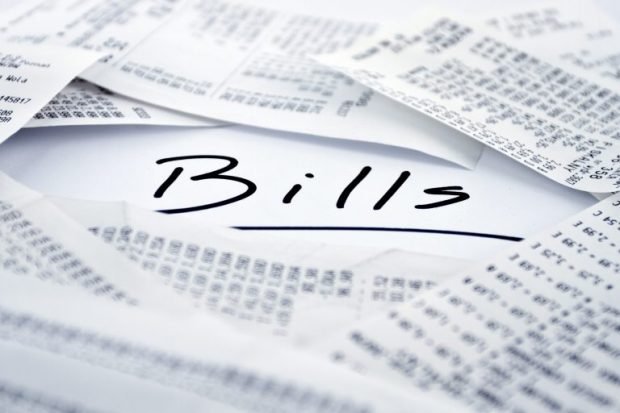How to Get $1,000 Into Your Emergency Fund Painlessly
The most important thing you can do to make your personal economy strong is to have an umbrella, an emergency fund with enough money in it to pay all of your bills for six months. And it needs to be safe and secure in a bank account.
You read that right: half a year’s income! Wait. You can’t even imagine being able to save $50? No worries. The secret to getting there is to start small — like with $50. Now it’s time to figure out how to come up with this seed money to start your emergency fund growing.
10% OFF THE TOP
Weekly, or as you get paid, save 10% right off the top before you do one other thing with that paycheck. Can’t do it? I’m sure you can, but OK. Start with 5% or even 1% and build up from there. Just start!
MAKE IT BILL NO. 1
This is going to be hard, but I know you can do it: Make feeding your emergency fund, whatever the amount, the very first bill you pay.
Once you have accumulated $50, open a free savings account at a local bank or online at SmartyPig.com or Ally.com.
GET RID OF NONESSENTIALS
Give up the things such as cable TV, eating out, gym membership and that landline phone you have but never use. That’s a start. You’ll know instinctively how to add to this list.
QUIT SMOKING
This suggestion requires no explanation. Although it does beg the question: Who can even afford to smoke these days? At about $6.96 for a pack of 20 smokes (U.S. average), that’s a $2,500-a-year habit.
Not a smoker? Substitute smoking with your personal vice that’s keeping you broke.
PULL BACK
Stop sending more money than required each month to your credit card company, mortgage lender or any other creditor. It’s admirable that you’re being diligent in repaying the debts but if you continue to do this while living without money in the bank to cover unexpected expenses, you’re setting yourself up to fall even deeper into debt.
CLEAN OUT
Take a look through your cupboards and closets. Identify everything you haven’t used in the past six months. Turn what you don’t need into cash using a website like eBay or Craigslist, or hold a yard sale. Add every nickel of the proceeds to your emergency fund savings.
Got books, CDs, electronics, etc. that are current, in good shape and you’d like to sell? Go to Decluttr.com to see if they’re buying what you’re selling. It’s super easy, and while you won’t get rich, it’ll be more than you have with all that junk sitting there in your garage or basement.
MAKE IT YOURSELF
Start cooking and baking. Even if you aren’t cooking from scratch, making meals at home will chop your food costs. Whatever it takes, find ways to stop the endless money-drain you’re forking out on food. For example, a decent loaf of bread now costs upwards of $5.00 at the supermarket or bakery. You can make it yourself for 50 cents a loaf.
INCREASE YOUR INCOME
Get a second job — or a third. Work more hours at your current job. Get a side gig. Get creative by making money doing things you already love to do such as dog walking or selling handmade items. Stop expecting someone else to cover your shortfall.
ADJUST WITHHOLDINGS
Use the 2021 Federal Withholding Estimator to make sure you aren’t having too much income tax withheld from your pay. Adjust until you are as close to neither owing or being owed. On your next payday, you may see more money in each paycheck. Don’t spend it; save it to your emergency fund.
STOP AT THE MATCH
If you are contributing to a retirement account such as a 401(k) or 403(b) and you do not have a healthy emergency fund as your safety net against having to borrow from that retirement account, don’t stop but adjust your contribution to be the same as the amount your employer matches — typically, 3% to 5%. Now you are not leaving free money on the table but you will see more money in your paycheck that you can immediately direct to your emergency fund.
Put these money-saving tactics into play and you’ll be able to save $1,000 in record time. But don’t stop there. First, let me know so I can celebrate with you, then keep going, one paycheck at a time.
Soon, you’ll have $5,000, then $10,000 or more set aside to keep you afloat during times of financial distress.
Oh, how I love this concept and plan! With your current financial situation, you really can put yourself in charge of your finances. You’re not a victim. You’re a money manager, learning the ropes, gaining experience, destined to be the CEO of your life — and a mighty fine CEO you will be!
Copyright 2022 Creators.com




